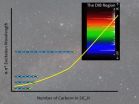(Press-News.org) The increasing urbanisation of rural areas in sub-Saharan Africa could lead to an explosion in incidences of heart disease and diabetes, according to a new study carried out in Uganda which found that even small changes towards more urban lifestyles was associated with increased risk of cardiovascular and metabolic diseases.
Over 530 million people live in rural areas of sub-Saharan Africa, where rates of cardiovascular and metabolic diseases tend to be much lower than in urban areas. However, many of these areas are becoming increasingly urbanised, with people living within larger populations in more built-up environments, with better access to education, health facilities and utilities, for example.
In an attempt to better understand the impact that urbanisation is having on communities, a team of researchers from the University of Cambridge, the Medical Research Council/Uganda Virus Research Institute Uganda Research Unit on AIDS, and Deakin University in Australia analysed data from 7,340 people aged 13 years and above across 25 villages in Uganda. Each individual was allocated an 'urbanicity score' and this was compared to their lifestyle risk factors, such as alcohol consumption, fruit and vegetable consumption, body mass index (BMI) and physical activity. The results are published today in the journal PLOS Medicine.
Dr Manjinder Sandhu from the Department of Public Health and Primary Care at the University of Cambridge, joint senior author of the study, says: "Over half a billion people live in rural areas across sub-Saharan Africa. We need to understand how the health of these populations will change as the areas develop and become more urbanised to enable countries to plan future healthcare programmes and develop interventions to reduce this risk."
The researchers found that levels of urbanicity varied markedly across the villages, ranging from those without educational facilities or electricity in households, to villages with a public telephone and a dispensary. However, despite the features of urbanisation being relatively modest, living in more urban villages was associated with increased prevalence of cardiovascular disease risk factors such as physical inactivity, low fruit and vegetable consumption, heavy drinking and high body mass index, even after controlling for other factors such as socioeconomic status.
Johanna Riha, first author and a Gates Cambridge Scholar at the University of Cambridge, says: "Development in rural areas will provide people with much needed access to education, healthcare and improved sanitation, with very positive health benefits. But it could be a double-edged sword and come at a cost of a greater incidence of diseases such as heart disease and diabetes."
Professor Janet Seeley, joint senior author from the London School of Hygiene & Tropical Medicine, adds: "Even a small increase in a person's level of urbanicity appears to be associated with poorer lifestyle choices that raise their risk of cardiovascular and metabolic diseases. As better infrastructure, education and healthcare systems are being developed, we should look for ways to use them to provide an opportunity to design and deliver interventions to help reduce the risk of these diseases."
INFORMATION:
The study was supported in part by the African Partnership for Chronic Disease Research.
Urbanization of rural Africa associated with increased risk of heart disease and diabetes
2014-07-29
ELSE PRESS RELEASES FROM THIS DATE:
Mysterious molecules in space
2014-07-29
WASHINGTON D.C., July 29, 2014 – Over the vast, empty reaches of interstellar space, countless small molecules tumble quietly though the cold vacuum. Forged in the fusion furnaces of ancient stars and ejected into space when those stars exploded, these lonely molecules account for a significant amount of all the carbon, hydrogen, silicon and other atoms in the universe. In fact, some 20 percent of all the carbon in the universe is thought to exist as some form of interstellar molecule.
Many astronomers hypothesize that these interstellar molecules are also responsible ...
This week from AGU: Cell tower rain gauges, lightning channels, North Sea storm surge
2014-07-29
This Week From AGU: Cell phone tower rain gauges, lightning channels, North Sea storm surge
From AGU's blogs: Dropped cell phone calls become rain gauges in West Africa
A shaky cell phone connection during a rainstorm can be an annoying nuisance. But now scientists are showing that these weakened signals can be used to monitor rainfall in West Africa, a technique that could help cities in the region better prepare for floods and combat weather-related diseases, according to a new study accepted for publication in Geophysical Research Letters, a journal of the American ...
Penn team makes cancer glow to improve surgical outcomes
2014-07-29
The best way to cure most cases of cancer is to surgically remove the tumor. The Achilles heel of this approach, however, is that the surgeon may fail to extract the entire tumor, leading to a local recurrence.
With a new technique, researchers at the University of Pennsylvania have established a new strategy to help surgeons see the entire tumor in the patient, increasing the likelihood of a positive outcome. This approach relies on an injectable dye that accumulates in cancerous tissues much more so than normal tissues. When the surgeon shines an infrared light on the ...
Huge waves measured for first time in Arctic Ocean
2014-07-29
As the climate warms and sea ice retreats, the North is changing. An ice-covered expanse now has a season of increasingly open water which is predicted to extend across the whole Arctic Ocean before the middle of this century. Storms thus have the potential to create Arctic swell – huge waves that could add a new and unpredictable element to the region.
A University of Washington researcher made the first study of waves in the middle of the Arctic Ocean, and detected house-sized waves during a September 2012 storm. The results were recently published in Geophysical Research ...
Underwater elephants
2014-07-29
In the high-tech world of science, researchers sometimes need to get back to basics. UC Santa Barbara's Douglas McCauley did just that to study the impacts of the bumphead parrotfish (Bolbometopon muricatum) on coral reef ecosystems at two remote locations in the central Pacific Ocean.
Using direct observation, animal tracking and computer simulation, McCauley, an assistant professor in the Department of Ecology, Evolution and Marine Biology, and his colleagues sought to understand whether the world's largest parrotfish is necessary for positively shaping the structure ...
Vision-correcting display makes reading glasses so yesterday
2014-07-29
BERKELEY — What if computer screens had glasses instead of the people staring at the monitors? That concept is not too far afield from technology being developed by computer and vision scientists at the University of California, Berkeley.
The researchers are developing computer algorithms to compensate for an individual's visual impairment, and creating vision-correcting displays that enable users to see text and images clearly without wearing eyeglasses or contact lenses. The technology could potentially help hundreds of millions of people who currently need corrective ...
Researchers take steps toward development of a vaccine against tick-transmitted disease
2014-07-29
Virginia Commonwealth University School of Medicine researchers have made an important advancement toward developing a vaccine against the debilitating and potentially deadly tick-transmitted disease, human granulocytic anaplasmosis (HGA).
During the past several years, experts have seen a steady rise in the incidence of human infections caused by tick-transmitted bacterial pathogens — making the need for a vaccine critical. Successful vaccine development hinges on knowing what to target to prevent disease, and the VCU team has identified three such proteins on the surface ...
Brainwaves can predict audience reaction for television programming
2014-07-29
Media and marketing experts have long sought a reliable method of forecasting responses from the general population to future products and messages. According to a study conducted at the City College of New York (CCNY) in partnership with Georgia Tech, it appears that the brain responses of just a few individuals are a remarkably strong predictor.
By analyzing the brainwaves of 16 individuals as they watched mainstream television content, researchers were able to accurately predict the preferences of large TV audiences, up to 90 percent in the case of Super Bowl commercials. ...
Socialization relative strength in fragile X longitudinal study
2014-07-29
Standard scores measuring "adaptive behavior" in boys with fragile X syndrome tend to decline during childhood and adolescence, the largest longitudinal study of the inherited disorder to date has found.
Adaptive behavior covers a range of everyday social and practical skills, including communication, socialization, and completing tasks of daily living such as getting dressed. In this study, socialization emerged as a relative strength in boys with fragile X, in that it did not decline as much as the other two domains of adaptive behavior measured: communication and daily ...
Brand-specific television alcohol ads predict brand consumption among underage youth
2014-07-29
Underage drinkers are three times more likely to drink alcohol brands that advertise on television programs they watch compared to other alcohol brands, providing new and compelling evidence of a strong association between alcohol advertising and youth drinking behavior.
This is the conclusion of a new study from the Center on Alcohol Marketing and Youth (CAMY) at the Johns Hopkins Bloomberg School of Public Health and the Boston University School of Public Health that examined whether exposure to brand-specific alcohol advertising on 20 television shows popular with ...



